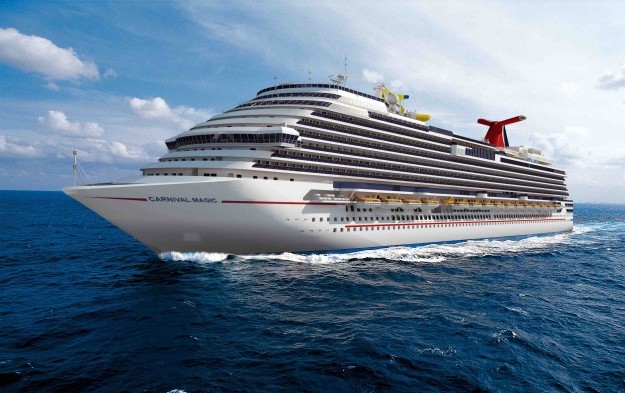Cruise lines cut China capacity on yield fears: Bernstein
Oct 04, 2017 Newsdesk Latest News, Rest of Asia, Top of the deck

Some cruise lines targeting Chinese customers, many via facilities such as on-board casinos, are actually pulling capacity out of the China market, suggests a new research report. Brokerage Sanford C. Bernstein and Co LLC suggested one reason is major discounting in some market segments resulting in pressure on yield per passenger.
“After several years of heady capacity growth in China, cruise lines are pulling capacity out of China in 2018,” wrote the authors of the report.
“The reason is somewhat simple: cruise lines are no longer generating yields in China that exceed those of other markets around the world (as they have in recent years),” added the brokerage’s analysts. “The reason why yields have declined of late is less simple, but we believe it is primarily a function of an inadequate distribution system,” they argued.
“The problem with cruise in China is not one of demand: it is one of properly monetising demand,” they added.
“The top four services sought by Chinese travellers align nicely with the cruise value proposition: transportation.., attractions.., food… and shopping. Also, and by no means insignificantly, there is [frequently available] gambling on board,” said the institution’s analysts.
They suggested that – when measured as a percentage of global capacity available via the cruise industry – China’s capacity contribution would drop for two major lines in 2018. Citing cruise company disclosures, cruise industry news sources and Sanford Bernstein estimates, the brokerage suggested Royal Caribbean Cruises Ltd and Carnival Corp would both reduce the percentage of their exposure to the China market next year, to 8 percent and 4 percent respectively, from 10 percent and 6 percent of global capacity this year. But Norwegian Cruise Line Holdings Ltd was likely to raise its capacity contribution via China from 4 percent this year to 8 percent in 2018, said Sanford Bernstein.
Explaining some challenges of the China cruise market, the brokerage stated: “Unlike other parts of the world, cruises in China are sold primarily via charter, which causes incentives between agents and operators to become misaligned. As a result, pricing discipline has eroded and the market has devolved to one where close-in discounts are rampant.”
Room for China growth
Sanford Bernstein said – citing China National Tourism Administration data and in-house analysis – that in 2016, 2.1 million Chinese took a cruise, making it the second-largest cruise market in the world after North America, which recorded nearly 12.6-million cruise passenger trips.
The research team stated: “In the most developed cruise markets in the world, cruising accounts for a mid-teens percentage of outbound travel. However, today cruise travel in China accounts for only 3 percent of outbound travel instances, even when excluding trips to Hong Kong and Macau.” This relatively low share for cruise trips regarding the available outbound tourism market in China was despite the travel market in that country becoming more mature, noted the brokerage.
It added: “We believe cruise lines need to take back control of pricing and find a way to lengthen the booking curve in order to stabilise pricing and yields in the market.”
The institution noted that if such fundamentals were addressed, there were still opportunities for cruise firms in the China market. The brokerage estimates the aggregate of all kinds of outbound trips made by Chinese annually will grow from 135 million in 2016 – or 72 million excluding trips to Hong Kong and Macau – to reach 260 million in 2025 – or 175 millon excluding visits to Hong Kong and Macau. That would be driven by “rising incomes, rising passport issuance, and easing visa restrictions,” it said.
But they suggested there were also some port capacity constraints on cruises originating in China.
“It is only a matter of time (2021 to be exact) until the current set of operating cruise home ports reaches infrastructural limits. Clearly additional home-port infrastructure will be needed, but most of it will come from the largely untapped Tier 2 and Tier 3 cities to the south,” wrote the Sanford Bernstein team, referring to the commonly-quoted ranking system used in China to define the economic development of Chinese urban areas.
Last week Genting Hong Kong Ltd – the owner of several cruise brands catering for different income segments and with operations in Asia – said it had launched an upmarket cruise service that features use of a luxury passenger jet – dubbed Crystal Skye – to move well-heeled customers to locations used by its cruise fleet.
The sold-out inaugural Asian journey cost US$18,000 for a seven-night and eight-day voyage, and will tour the Pacific islands of Fiji and Tahiti.
Related articles
-
 Aristocrat Gaming flags partnership...
Aristocrat Gaming flags partnership...Oct 23, 2024
-
 Alliance affirms Newport World shakeup...
Alliance affirms Newport World shakeup...Jun 11, 2024
More news
-
 GKL provides its new table game...
GKL provides its new table game...Nov 22, 2024
-
 The Baron Upright, a new cabinet from...
The Baron Upright, a new cabinet from...Nov 22, 2024
Latest News
Nov 22, 2024
Casino operator Grand Korea Leisure Co Ltd (GKL) says it has achieved its first commercialisation of a new-to-market table game, developed via an in-house competition dating to 2021. Grand Korea...Sign up to our FREE Newsletter
 (Click here for more)
(Click here for more)
Pick of the Day
”As we navigate the final steps of the licensing process, we remain confident in our ability to align with Brazil’s regulatory requirements”
Eusebio Tanco
Chairman of DigiPlus Interactive
Most Popular
 Macau to get 36mln visitors in 2025: Secretary Lei November 21, 2024
Macau to get 36mln visitors in 2025: Secretary Lei November 21, 2024  Gaming technology firm IGT reports hacking incident November 21, 2024
Gaming technology firm IGT reports hacking incident November 21, 2024  EBITDA a focus in Macau market share battle: Jefferies November 21, 2024
EBITDA a focus in Macau market share battle: Jefferies November 21, 2024  Macau 2025 GGR could top US$30bln govt forecast: Citi November 20, 2024
Macau 2025 GGR could top US$30bln govt forecast: Citi November 20, 2024  Macau big-event outdoor venue gets trial run Dec 28: CE November 20, 2024
Macau big-event outdoor venue gets trial run Dec 28: CE November 20, 2024









